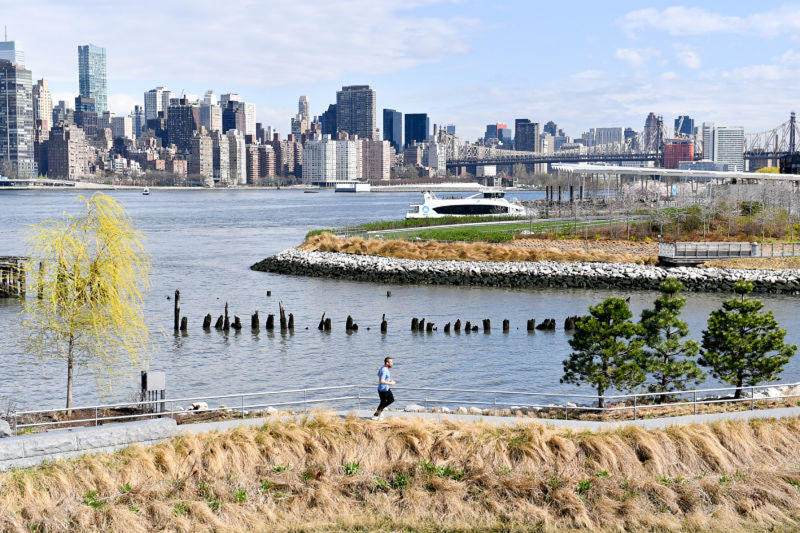Covering Climate Now
Storm-resistant parks are helping cities defend themselves against flooding
Sign up now: Get ST's newsletters delivered to your inbox

The flower beds at Hunter's Point South Park disguise a ditch and filtration system that captures water and slowly releases it back into the river; synthetic turf absorbs water, too.
PHOTO: NYC PARKS
Follow topic:
NEW YORK - Flooding from storm surges and heavy rainfall can be one of the most devastating effects of storms - and scientists say climate change is making those storms worse. Often, engineers build barriers like sea walls and levees to protect coastal cities. But now, there's a new, prettier approach: public parks that are also storm-resistant.
One of those parks, Hunter's Point South Park, sits on the edge of New York's East River. The park boasts rows of seasonal plants, winding paths, and breathtaking views. But that's not all: the flower beds disguise a ditch and filtration system that captures water and slowly releases it back into the river; synthetic turf absorbs water, too.
"In a big, heavy storm, we almost have a half a million gallons of water being held here, detained, until the tide or the storm leaves, and then it goes right back to the river," said Tom Balsley, who designed the park with Michael Manfredi and Marion Weiss.
"It really has to do with employing the right design strategies," Balsley added. "So, it can take those storms, it can take the hit, but you know it's gonna bounce back."
Just over 160 km south, the community of Southbridge in Wilmington, Delaware, isn't only battling super storms - they're battling every storm.
"When it rains, and the Christina River water rises above the floodgate, the floodgate cannot open," said Marvin Thomas, the former president of the Southbridge Civic Association. "So the water just backs up into the community."
Neighbourhood activists like Marvin Thomas and Marie Reed have lived in this waterlogged community most of their lives. When asked what she remembered from her childhood, Reed said, "Not sleeping the night it rained."
"My father would say, 'All hands on deck,' because that means everybody's going to the basement, ready to take buckets and get the flooding water outta the basement," she said.
After decades of pushing for change, they may finally see some relief. This summer, the city broke ground on the South Wilmington Wetlands Park, a project designed to stop the flooding in much of the community.
"We'll accomplish that by putting a series of new stormwater pipes in the roads through the Southbridge community," said Jeff Flynn, Wilmington's economic development director. "Those pipes will divert water into this wetland eventually to the channels where it'll circulate and then move into the Christina River."
"Do you think if this were a wealthy, white community that you would've had change decades ago?" asked CBS News correspondent Nikki Battiste.
"Yes," Reed said. "See, Marvin'll smile at you. Marie's gonna tell you, 'yes, I do' … It would've been rectified a long time ago."
The pair's hard-fought victory only solves flooding for roughly two-thirds of the neighbourhood. Wilmington city planners hope to fix the remaining flooding in Southbridge with a future wetlands project, and they're also joining cities across the country by looking into ways to protect the city from longer-term concerns like sea-level rise.
Boston wants to build a more resilient coastline, for example, and Houston has been transforming its bayou system with parks that can also manage flooding.
This story originally appeared on CBS News online. It is republished here as part of The Straits Times' partnership with Covering Climate Now, a global collaboration of more than 250 news outlets to strengthen coverage of the climate story.

